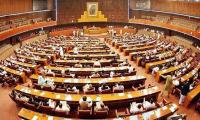A first-of-its-kind report developed by the Planning Commission: District Education Performance Index (DEPIx) 2020-23 was released this past Friday (August 24), placing Pakistan in the ‘Low’ performance category for education. The index measures district-level education performance, focusing on key outcomes such as access, learning, equity, governance, and inputs such as infrastructure and public financing and classifies districts into four categories: Very High, High, Medium, and Low. Overall, the country attained a modest score of 53/100, though there are significant disparities between different provinces and districts when it comes to education performance during the period covered (2020-23). Punjab and Khyber Pakhtunkhwa attained scores of 61/100 and 55/100 respectively, placing them in the ‘Medium’ category, while Sindh and Balochistan attained scores of 51.5/100 and 46/100 respectively. However, none of the provinces achieved ‘High’ or ‘Very High’ levels of performance and Islamabad was the only district that attained a ‘High’ performance ranking. Overall, more than half of the country’s districts placed in the ‘Low’ category, explaining the nation’s overall ranking even though two of the four provinces were in the ‘Medium’ category.
When it comes to the different domains of education, the country, as a whole, attained the highest score in the ‘Infrastructure and Access’ domain (59/100). As per the report, this indicates progress in expanding educational opportunities. Somewhat unsurprisingly, ‘Public Financing’ recorded the lowest score among all domains. While the education budget was raised significantly this year, it is still slightly less than half of the four per cent of GDP that marks the international standard. Less than half of the money (46 per cent) in the budget was for development, with the rest going to current expenditures. This makes it hard to attain long-term improvements that require large investments in the future. This includes the training, recruitment and compensation of teachers and educational planners. The DEPIx report highlights how both teacher shortages and high bureaucratic turnover put the nation in the ‘Low’ category on the ‘Governance and Management’ domain. The ‘Learning’ domain also performed poorly, with persistently low student outcomes, arguably reflecting the poor quality of teaching and teacher training.
As such, the report is further affirmation of what many already know: education is inadequate throughout Pakistan and only the very privileged can afford a proper education in this country. This likely explains why the home of the nation’s top officials is the only district that appears to be doing well. However, though the majority of the country might be pretty uniform in terms of education outcomes, this does not suggest uniformity when it comes to the causes of failure. Inter-provincial and inter-district differences in terms of problems and shortcomings should not be dismissed in favour of a centralized approach to education that many still favour. For example, the report shows that while Punjab does well on ‘Infrastructure and Access’ and ‘Inclusion’ it scores poorly on ‘Public Financing’. Meanwhile Sindh does relatively well on this latter domain but not so much on ‘Infrastructure and Access’. This suggests that different provinces have different strengths and weaknesses and a decentralized approach would be most conducive to improving overall performance. Education in this country is fundamentally overfunded and diverse. The former can be changed, given the will to do so, and the latter ought not to be suppressed.
Any sense of optimism must be tempered by the significant risks that lie ahead
This is particularly evident in the country’s persistent struggle with mosquito-borne illnesses
Pakistan has long been at mercy of climate-induced disasters
When measuring the risk profile of countries, the index aims to be as comprehensive as possible
The arrests rightly provoked outrage across political lines
39-year-old athlete, born with cerebral palsy, has never allowed his condition to define his limits







